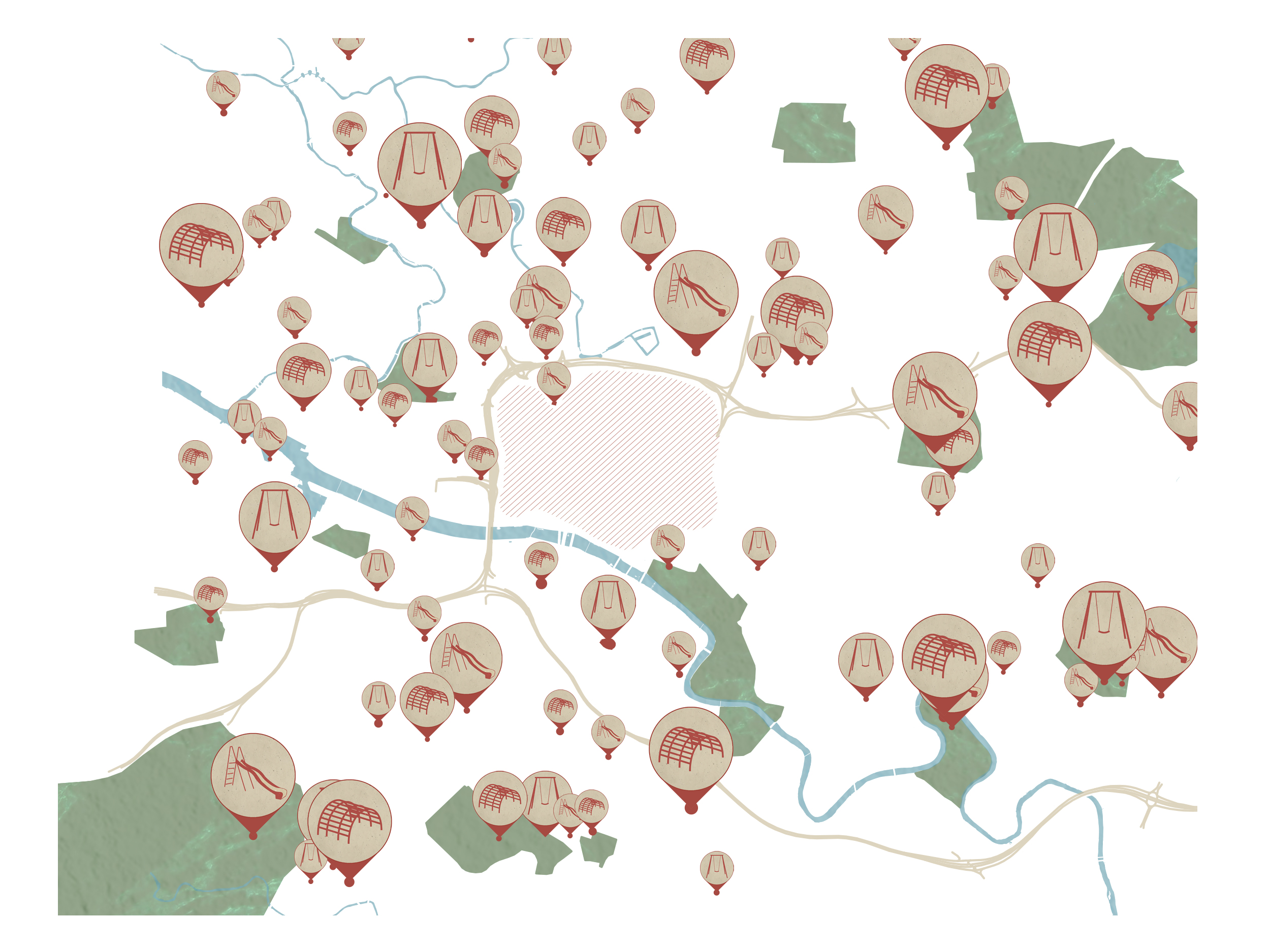For a child the playground is part of everyday life. Playing is more than second nature to a child, it is the way they navigate and experience the world. A successful playground is the place of social, physical, emotional and mental growth: a place of pure experimentation. It is in the playground that the child’s understanding of space can be strengthened. So why is it that in the heart of our city, there is a severe lack of playable environments for children or even any child-focused urban design?
Through mapping the playspaces of the city centre of Glasgow and its immediate context it is clear there is a lack of any play environments in the city centre. Over-commercialization of this key district of Glasgow has driven away the possibilities of a successful public realm and with vast squares, and large shopping streets an ‘adult’ behaviour to the urban spaces is dictated. It seems that the only playable spaces are commercialized and placed within shopping malls or the shops themselves.
Due to the nature of a playground and its social and spatial requirements, when placed within a dense urban context an exciting public realm and an enhanced sense of place becomes a by-product of this urban intervention. In redesigning the urban spaces, refocusing to a more child-centric urban planning and integrating playable environments into the design language of the streets and squares of Glasgow city centre it is possible that we can create the sense of place that the commercial district of our centre is currently severely lacking.
instagram: @g_reiddesign
Key Themes: Boundaries, Inequality

